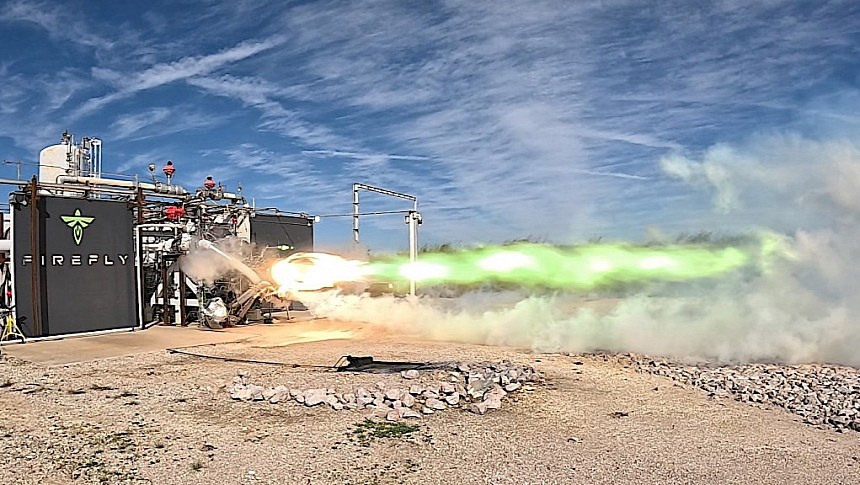Despite being perhaps the pinnacle of human ingenuity and imagination, space exploration is a relatively conservative business, at least in one respect: once it's proven something works, the industry tends to stick with it.
What that means is that, for instance, good rocket engine designs tend to be around for a long time. You need look no further than the most recent rocket design coming out of America: the Space Launch System (SLS) of the Artemis Moon exploration program uses for its core stage engines called RS-25.
It's the same type of design that was deployed on the now defunct Space Shuttle – in fact, it's not only the design that was reused, but some of the engines that have flown Shuttles before are now part of the most powerful Moon rocket ever.
At the same time, space exploration has picked up an incredible pace, and that means not everybody relies on old tech. Not when there are countless startups now doing business in this field.
One alliance developing new rockets and every piece of tech that comes with them is the one between Firefly Aerospace and Northrop Grumman. The two are working on two new designs, the Antares 330 and the Medium Launch Vehicle (MLV).
Each of these two space vehicles will be powered at least in part by a new kind of engine developed by Firefly. Called Miranda, the family of rocket powerplants just went through its first major test.
That would be the engine's first hot fire test, a procedure that took place just one year after the two companies tied the knot. The procedure was used to validate the powerplant's "startup sequence, transient conditions, and tap-off engine architecture."
Miranda is described as "the fastest propulsion system we've built and tested to date," according to Firefly. One example is powerful enough to develop 230,000 pounds of thrust.
Seven of them will go into the first stage of the upgraded Antares 330, making for a total of 1.6 million pounds of thrust. The rocket will be used to send ten tons of cargo to the International Space Station (ISS). The first flight of the piece of hardware is scheduled for mid-2025.
The MLV, on the other hand, considered the evolutionary successor to the Antares launch vehicle, will fly for the first time later that same year. Its second stage will use a single Miranda vacuum engine.
The MLV is designed to transport 16 tons of cargo to low-Earth orbit, inside a 5-meter class customizable payload fairing.
Before it gets to do all that, Miranda will have to undergo some further testing. Up next on the agenda is a full-duration hot fire test, putting its components through their paces for a total of 206 seconds. Firefly does not say when we are to expect this test.
It's the same type of design that was deployed on the now defunct Space Shuttle – in fact, it's not only the design that was reused, but some of the engines that have flown Shuttles before are now part of the most powerful Moon rocket ever.
At the same time, space exploration has picked up an incredible pace, and that means not everybody relies on old tech. Not when there are countless startups now doing business in this field.
One alliance developing new rockets and every piece of tech that comes with them is the one between Firefly Aerospace and Northrop Grumman. The two are working on two new designs, the Antares 330 and the Medium Launch Vehicle (MLV).
Each of these two space vehicles will be powered at least in part by a new kind of engine developed by Firefly. Called Miranda, the family of rocket powerplants just went through its first major test.
That would be the engine's first hot fire test, a procedure that took place just one year after the two companies tied the knot. The procedure was used to validate the powerplant's "startup sequence, transient conditions, and tap-off engine architecture."
Miranda is described as "the fastest propulsion system we've built and tested to date," according to Firefly. One example is powerful enough to develop 230,000 pounds of thrust.
Seven of them will go into the first stage of the upgraded Antares 330, making for a total of 1.6 million pounds of thrust. The rocket will be used to send ten tons of cargo to the International Space Station (ISS). The first flight of the piece of hardware is scheduled for mid-2025.
The MLV, on the other hand, considered the evolutionary successor to the Antares launch vehicle, will fly for the first time later that same year. Its second stage will use a single Miranda vacuum engine.
The MLV is designed to transport 16 tons of cargo to low-Earth orbit, inside a 5-meter class customizable payload fairing.
Before it gets to do all that, Miranda will have to undergo some further testing. Up next on the agenda is a full-duration hot fire test, putting its components through their paces for a total of 206 seconds. Firefly does not say when we are to expect this test.






